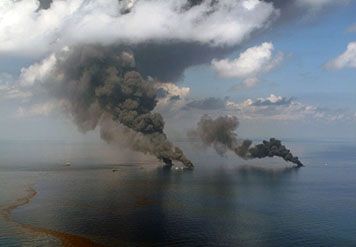Response Options Calculator (ROC)
The Response Options Calculator (ROC) can be used to assess system performance of oil spill response methods, including mechanical recovery, dispersant application, and the in situ burning of oil.
ROC predicts how the spilled oil will weather over time and the volume of oil that can be recovered, treated, or burned for the response systems selected.
Download or use ROC online: Learn more about ROC, download a version, or use it online on the ROC section of the Genwest Systems, Inc. website. Also available there are:
- A User’s Guide, which explains the design and use of ROC and provides easy-to-follow examples of building a custom scenario.
- Nine training videos.
- Draft technical documentation that provides detailed information about the methods, assumptions, and calculations used in ROC.
Note: ROC replaces the Spill Tools™ suite of computer-based tools: the Mechanical Equipment Calculator, the In Situ Burn Calculator, and the original Dispersant Mission Planner.
Assessing System Performance
Gauging the performance of oil spill response equipment has long been of interest for government regulators, oil spill responders, and the oil industry. The Oil Pollution Act of 1990 (OPA 90) and Executive Order 12777 resulted in regulations that contain minimum on-water oil removal equipment requirements for facility and vessel response plans. For example, for skimming equipment, the planning standard is the Effective Daily Recovery Capacity (EDRC). For dispersant application, the planning standard is the Effective Daily Application Capacity (EDAC). It is important to note that these are planning standards and not performance standards. While EDAC calculations can be closer to reality than EDRC, it is inappropriate to use EDAC and especially EDRC as measures of actual performance potential at oil spill response exercises and at actual oil spill incidents. The following publications provide some guidance in estimating potential response system performance:
- ASTM F1780 Guide for Estimating Oil Spill Recovery System Effectiveness
- ASTM F631 Guide for Collecting Skimmer Performance Data in Controlled Environments
- ASTM F1607 Guide for Reporting of Test Performance Data for Oil Spill Response Pumps
It is not possible to recover, disperse, or burn more oil than that which is encountered. ROC uses encounter rate calculations with hourly modeled values for spilled oil average thicknesses to provide state-of-the-art estimates of potential response performance.
Acknowledgements
The original ROC development project was funded by Shell Oil Company, the American Petroleum Institute, the Marine Minerals Program of the U.S. Department of the Interior, Genwest Systems, Inc. and Spiltec. Funding for the technical documentation was provided by ExxonMobil.
Related Information
Four calculators for estimating potential response performance: Learn about ERSP, EBSP, EDSP, and ReSET, which are available from the website of the Bureau of Safety and Environmental Enforcement (BSEE).
NUCOS Unit Converter: Try out this unit converter, designed especially for oil spill responders.
SMART: Learn about Special Monitoring of Applied Response Technologies, or SMART, a cooperatively designed monitoring program for dispersants and in-situ burning.
Dispersant Application Observer Job Aid: Use this field guide to help you identify dispersed and undispersed oil, describe oil characteristics, and report this information to decision-makers.
Questions: Contact us with your questions, comments, or bug reports for Spill Tools.
Go back to the page, Response System Planning Tools.
 An official website of the United States government.
An official website of the United States government. 

